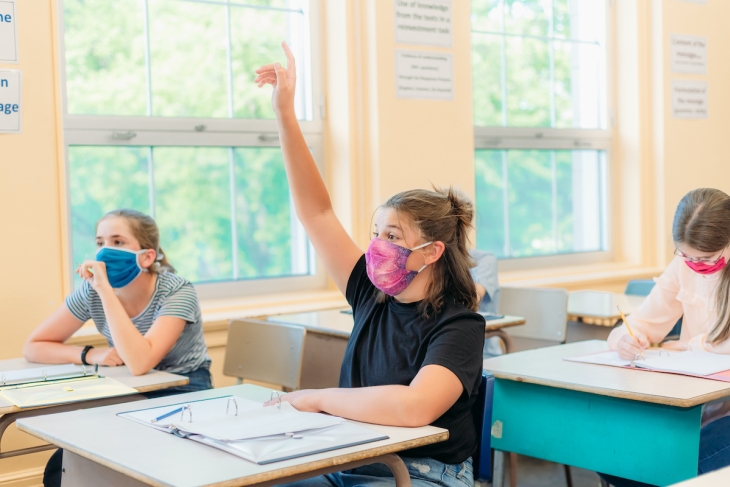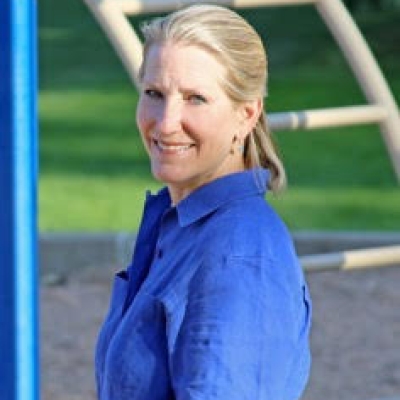For the past nine months, the battle against Covid-19 has required school districts to constantly adapt as conditions evolved.
School indoor air quality is the next challenge districts must successfully meet if in-person instruction is to continue or resume.
Let me begin with some points I think many people reading this agree on:
1. Many children have experienced substantial learning losses due to disruption of last spring’s semester and in some cases the use of remote and hybrid learning this fall. While the finer points of individual studies can be challenged, the overall conclusion from studies by NWEA (“The COVID-19 Slide”), and CREDO (“Estimates of Learning Loss in the 2019-2020 School Year”), is that when they are finally measured, student learning losses are likely to be large.
2. Studies by Hanushek and Woessman (“The Economic Impact of Learning Losses”), Brookings (“Learning Losses Due To COVID-19 Could Add Up To $10 Trillion”) and McKinsey (“COVID-19 And Student Learning In The United States: The Hurt Could Last A Lifetime”) all find that the economic and social impact of unrecovered learning losses will be substantial.
3. Even after a summer to improve their offerings, remote learning in many school districts remains much less effective than in-person instruction (e.g., “Too Little, Too Late,” by Nate Malkus, and “Remote Learning is a Catastrophe,” by Jonathan Chait).
4. The failure to return to in-person, in-school learning is having a severe impact not only on many children’s social and emotional wellbeing, but on their parents’ (and especially their mothers’) employment and income (e.g., “Lack Of School And Child Care Could Mean Losing A Generation Of Working Parents,” from CNBC).
5. Reports by the CDC (“COVID-19 Trends Among School-Aged Children — United States, March 1–September 19, 2020”) and the European Centre for Disease Prevention and Control (“COVID-19 in Children and the Role of School Settings in COVID-19 Transmission”) have both concluded that the risk associated with in-person instruction in school settings is low. On the basis of these and other studies, Professor Emily Oster from Brown University concluded that “schools aren’t super spreaders.”
Given what is at stake, all else being equal we should hasten the return to in-person instruction, right?
Right. But there’s a critical catch.
When it comes to Covid-19, all else doesn’t remain equal for long. For the past nine months, the challenges we face have been constantly evolving, due to changes in the virus itself, our approaches to treating it, government policy, and human behavior.
And with winter on the horizon, now we face a new challenge: Our schools’ indoor air quality, which will soon become a critical issue when temperatures drop and the windows must close.
Last May, the American Society of Heating, Refrigerating and Air-Conditioning Engineers (ASHRAE) issued its initial guidance on indoor air quality to reduce COVID-19 infection risk (“Guidance for Building Operations During the COVID-19 Pandemic”).
One of its key recommendations was the use of filters rated at least MERV-13 in HVAC systems. These filters have small enough pores to catch most viruses. Unfortunately, many schools can’t use these filters, either because the filter housing is too small, or because they lack sufficient power to push a minimum quantity of air through them.
In July, the United States National Academies of Sciences, Engineering, and Medicine released a consensus study report called “Reopening K–12 Schools During the COVID-19 Pandemic”. One of its key findings was that, “aerosols containing the virus can accumulate in the air in a closed space with limited ventilation such that people can become infected by breathing in virus containing aerosols.”
The NAS report also found that, in a June 2020 report (“School Districts Frequently Identified Multiple Building Systems Needing Updates or Replacement”), the US Government Accountability Office (GAO) “estimated that 41 percent of districts need to update or replace heating, ventilation, and air conditioning (HVAC) systems in at least half of their schools, representing about 36,000 schools nationwide.”
On August 20, the CDC issued “Strategies for Protecting K-12 School Staff from COVID-19.” With respect to ventilation, it simply referred back to the ASHRAE guidance.
On September 15, the CDC issued “Indicators for Dynamic School Decision Making” with respect to reopening for in-person instruction. All it had to say about ventilation was this: “Ensure ventilation systems operate properly and increase circulation of outdoor air as much as possible, for example by opening windows and doors.”
On September 29, the Royal Society (the UK equivalent of the US National Academy of Sciences) issued its report, “The Ventilation Of Buildings And Other Mitigating Measures For COVID-19: A Focus On Winter 2020”. It is by far the most comprehensive analysis of this issue that I have seen to date.
Critically, it contains tools that school districts and health departments can use to quantify the risk of contracting Covid-19 from indoor exposure to aerosols containing the SARS-CoV-2 virus.
This risk is a function of the amount viral aerosols that accumulate in a space over time. In turn, this depends on a number of controllable variables, including:
- The volume of an enclosed space, in cubic feet (all else being equal, smaller is riskier).
- The number of people in the enclosed space (more is riskier).
- How long they are in the enclosed space (longer is risker).
- An assumption about how many of these people are shedding viruses (more is riskier).
- The activity the people are performing (more active is riskier, e.g., listening to a teacher versus having choir practice).
- And the parameters at which the HVAC system is operating, including the efficiency of its filters (lower MERV rating is riskier), the amount of air changes per hour (fewer is riskier), and the amount of outdoor air entering the space each hour, from open windows or through HVAC system (less outside air is riskier).
This methodology is essentially the same one that has been used in the past to measure the accumulation of carbon dioxide in classrooms, which has been shown to reduce students’ cognitive function (for example, see “Indoor Air Quality and Academic Performance,” by Tess Stafford).
Thus, the Royal Society concludes that, “wherever practical, monitoring of CO2 levels (and maintaining these below about 1,000 ppm) to ensure adequate ventilation provision is achieved can help manage the risk of Covid-19 transmission via the airborne route in winter 2020.” The report also provides a link to another UK government report that contained a model for forecasting classroom CO2 levels over the course of a day.
The installation of classroom CO2 level monitors can be used to validate this model and provide early warning of a potentially dangerous level of viral aerosols. That can trigger a range of immediate responses, including opening the windows, changing activities, and temporarily evacuating the classroom until the CO2 level returns to a safe level.
Given the GAO’s findings about the state of many schools’ HVAC systems, and the high educational and economic stakes involved, use of models to forecast classroom CO2 and SARS-CoV-2 virus aerosol levels, and installation of CO2 monitors, are prudent steps for districts to take to enable the return to, or continuation of, in-person education this winter.
For the past nine months, the battle against Covid-19 has required constant adaptations as conditions have continued to evolve. School indoor air quality is the next battle districts must fight.
The good news is that by using the tools that are now available, there is a good chance we can win it.




